
Yesterday, October 12th, was “Columbus Day” – a day where the United States government honors and celebrates the achievements of Christopher Columbus. For some in the United States, Columbus Day is just another holiday. However, for many individuals and communities – it is a painful reminder that history has forgotten the facts. Christopher Columbus was a hero to some and a villain to others. What his true legacy in the Americas is and to whose expense we celebrate his “discovery” has been called into question. In fact, this notable video below asks us to reconsider why we celebrate Columbus Day and not Indigenous People’s Day.
As you listen to the voices in this video – you may relate to the emotions and words used. As Sikhs, we also won’t allow individuals such as KPS Gill to be named a hero and as humanitarians we won’t perpetuate the heroic notions of Gandhi. Heinous crimes were committed and rights were violated and yet these individuals are still celebrated for their achievements. “With all due respect,” while India [or the U.S.] goes on remembering these so-called heroes, voices in the diaspora ask you to reconsider. It is important that we stand side by side with our sisters and brothers in other communities to pay homage to their history. We must rebuild our global community together.
Sotheby’s is having an auction today in New York of South Asian Modern and Contemporary Art including Miniature  Paintings.
Paintings.
Sotheby’s September 2009 auction of South Asian Art features a carefully-curated offering of works by leading modern and contemporary Indian artists, accompanied by an eclectic group of miniature paintings from the Rajput and Punjab Hills courts of northern India, as well as a selection of cutting-edge contemporary art from Pakistan. [Sotheby’s]
Of interest is a 1912 large portrait (approximately 5’x3′) of Guru Gobind Singh Ji estimated at $50,000-$70,000, as well as a miniature of all the Sikh Gurus with Guru Nanak Ji at the center, and a miniature of Maharaja Ranjit Singh on his stallion with weapons, accompanied by foot soldiers.
This large portrait of Guru Gobind Singh Ji, according to a Times of India article, is part of a series of four closely-related paintings depicting Guru Gobind Singh. Apparently each portrait was the inspiration for the next. It’s unclear where in the series this painting belongs or who the painter was, but the last painting in the series is currently on display at Hazur Sahib in Maharashtra and was created by Hari Singh.
Which leads to questions- if the last in the series is at the Hazur Sahib and this is at Sotheby’s, where are the other two? What path have these pieces taken? The works in this collection were probably passed down from one legitimate private owner to another. Perhaps they were commissioned by British officers. I have no evidence of anything otherwise.
But in general, the plunder from wars and violence often ends up on sale somewhere far from its source. The art and artifacts that were lost in Operation Bluestar weren’t inventoried. We don’t even have a way of identifying lost or stolen art in order to make a claim that it rightfully belongs to the community. Perhaps a budding art historian will be interested in a research project… attempting to document artwork remembered as being held at the Darbar Sahib or other sites of looting so that if it shows up on sale, we’ll be able to recover it.
According to a Deputy Director of Sotheby’s, the collector base for miniatures is largely made up of European, British and American collectors. It includes only a small group of NRIs. [TOI] Glad to see that we’re keeping our heritage intact for future generations! 😉
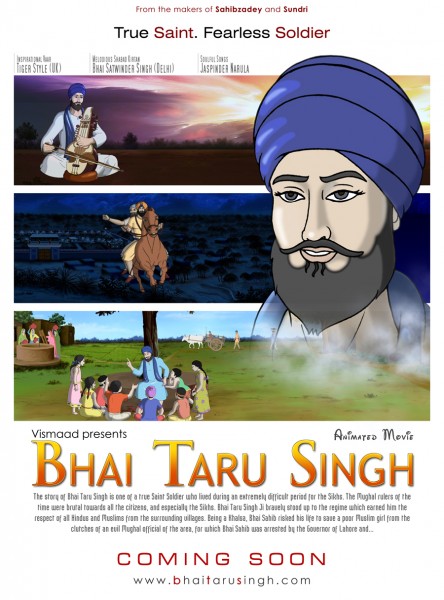 babania kehania put saput karaen ||
babania kehania put saput karaen ||
The stories of one’s ancestors make the children good children.
(Guru Amar Das, Raag Raamkalee, Page 951 of Guru Granth Sahib)
The American writer Muriel Rukeyser once said that the universe is made up, not of atoms, but of stories. This especially holds true for the Sikh universe. Stories or anecdotes from our short but action-packed history provide us with guidance, inspiration and resilience. Who needs fictional super-heroes when the Sikh narrative provides us with so many real-life heroes who did extraordinary things?
For most Sikhs, myself included, these Sikh stories told to us by our parents and grandparents were an essential part of growing up Sikh. However, we’re quickly losing this great oral tradition. For a variety of reasons, parents and grandparents aren’t telling sakhis like they used to and kids aren’t listening to them.
(more…)
 The issue of the loss of Sikh heritage sites and documents has long been lamented by many Sikhs. In fact, one of my fellow langa(w)riters blogged about the need to ‘preserve what history we have left.’ One group has been silently seeking to remedy this problem – the Nanakshahi Trust.
The issue of the loss of Sikh heritage sites and documents has long been lamented by many Sikhs. In fact, one of my fellow langa(w)riters blogged about the need to ‘preserve what history we have left.’ One group has been silently seeking to remedy this problem – the Nanakshahi Trust.
Quietly working on a massive project for over the past 6 years, the Nanakshahi Trust, along with the Sikh Research Institute, have inaugurated the Panjabi Digital Library:
For the first time ever a searchable collection of millions of rare pages on the Sikhs and the region of Panjab has been made available. Panjab Digital Library (PDL) will include texts of manuscripts, books, magazines, newspapers and photographs and will be available to anyone with Internet access at www.PanjabDigiLib.org. This launch was made possible in part by The Nanakshahi Trust and the Sikh Research Institute (SikhRI).
In today’s society, digitization is the key to immortality. While Sikhs have to be equally wary of those that claim Sikhs have no history as well as those that come up with their own ludicrous interpretations, a project such as the Panjab Digital Library allows Sikhs to access their own primary and secondary sources. Nanakshahi Trust has done a tremendous boon to Sikhs, researchers, and all that are interested in the preservation of history and man (and woman’s) historical past.
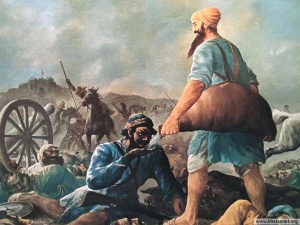 I’ve always enjoyed a good story…and amongst all the depressing news lately of our declining economy, raucous town hall meetings, and corrupt politicians…I often turn to StoryCorp’s podcasts for a quick “pick-me-up”. A few months back, I came across a beautiful piece titled “Finding El Dorado.” It’s the story of Gus Hernandez and the unique friendship he developed with Siddiqi Hansoti as a result of the current economic crisis. I was moved by this simple story of compassion and the power of the human spirit. Take a listen…it’s only 3 minutes [link].
I’ve always enjoyed a good story…and amongst all the depressing news lately of our declining economy, raucous town hall meetings, and corrupt politicians…I often turn to StoryCorp’s podcasts for a quick “pick-me-up”. A few months back, I came across a beautiful piece titled “Finding El Dorado.” It’s the story of Gus Hernandez and the unique friendship he developed with Siddiqi Hansoti as a result of the current economic crisis. I was moved by this simple story of compassion and the power of the human spirit. Take a listen…it’s only 3 minutes [link].
This story got me thinking about compassion and what it means to a Sikh. After some brief research, I found dozens of references to Daya (and its variations – Dayal, Dayala etc.) in the Sri Guru Granth Sahib Ji. Depending on the context, it is loosely translated as compassion, mercy or pity. Several times it is used as an attribute of Waheguru:
miharavaan kirapaal dhaeiaalaa sagalae thripath aghaaeae jeeo |3|
He is Merciful, Kind and Compassionate. All are satisfied and fulfilled through Him. ||3||
Other times it is used in the context of an Ardaas:
jath sath chaaval dhaeiaa kanak kar praapath paathee dhaan |
Please bless me with the rice of truth and self-restraint, the wheat of compassion, and the leaf of meditation.
But what I connected with the most was how compassion was described as a necessary attribute of the GurSikh:
dhaeiaa kapaah santhokh sooth jath gantee sath vatt |
Make compassion the cotton, contentment the thread, modesty the knot and truth the twist.
eaehu janaeoo jeea kaa hee th paaddae ghath |
This is the sacred thread of the soul; if you have it, then go ahead and put it on me.
In remembrance of the 25th anniversary of the Darbar Sahib attack, I’m re-posting a piece I had written for sikhchic.com‘s “1984 & I” series:
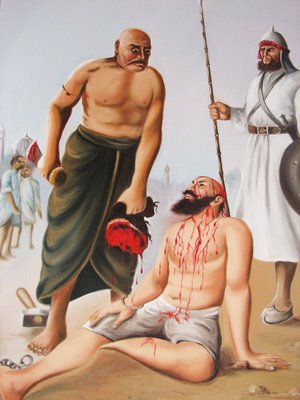
This Is Who We Are
Years ago, I was giving a local church group a tour of our Gurdwara. While I was showing them around the langar hall and explaining the history and significance of langar, I noticed that I was losing my audience. It took me a second to figure it out, but it appeared they were fixated on one of the images on the wall. It was the painting we’ve all seen of Bhai TaruSingh being scalped and blood running down his body. I’m not sure what shocked them more – the graphic painting itself, or the five-year-old boy sitting beneath it, quietly eating his meal.
For just a second, I put myself in their shoes. I looked around the room and saw pictures of Sikh martyrs from the 18th century – a man being boiled alive, a person being sawed in half, two little boys being bricked alive, and an old man with his fingers getting chopped off. And I thought to myself…is this really necessary, the depiction of these scenes in these surroundings?
I started to wonder: are these images really what we want to convey to our visitors? Shouldn’t we find something that depicts universality and love for humanity? Especially after 9/11, shouldn’t we be displaying a softer image of Sikhs? After all, this dining area is a place for us to share a common meal, and little children play down here, for God’s sake! Is this really appropriate?
But then it dawned on me …
This is who we are.
This week, Peter Bance published “Sovereign, Squire and Rebel: Maharajah Duleep Singh and the Heirs of a Lost Kingdom.” It includes some little known and interesting information on Rani Jindan- the youngest of Maharaja 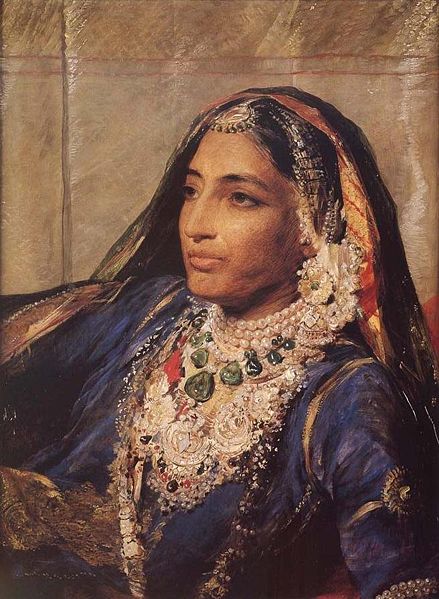 Ranjit Singh’s wives. While the tale of her son, Duleep Singh, has been well documented, less has been known about Rani Jindan.
Ranjit Singh’s wives. While the tale of her son, Duleep Singh, has been well documented, less has been known about Rani Jindan.
While researching a tome on the Duleep Singh family, which lived in exile on a sprawling country estate near Thetford, Norfolk, Mr Bance stumbled upon the gravestone of Jind Kaur in the catacombs of the Kensal Green Dissenters’ Chapel. Historians had assumed that the Maharani’s cremation occurred in India but here was a simple white marble tombstone in London with her name on it. [link]
So who was Rani Jind Kaur? Some things were previously known- that after the death of her husband, she became the Regent (acting head of state because the ruler is a minor) for her son, Duleep Singh.
To say that Jind Kaur was a thorn in the side of the East India Company would be an understatement. She was born into humble origins, the daughter of the Royal Kennel Keeper at the Sikh court in Lahore, but she was ravishingly beautiful and soon caught the attention of the Punjab’s greatest ruler, the one-eyed Ranjit Singh.
Having kept the British at bay for decades, Ranjit’s empire began to crumble with his death in 1839. Following a series of bloody succession battles, Jind emerged as regent for Duleep who was less than a year old when his father died. [link]
Rani Jindan was instrumental in organizing Sikh resistance to the British in the First and Second Anglo-Sikh wars.
Gatka owes its early development to the Shaster Vidiya, literally meaning knowledge of the arms. This was a warrior curriculum used by the Sikhs for military training. [link]
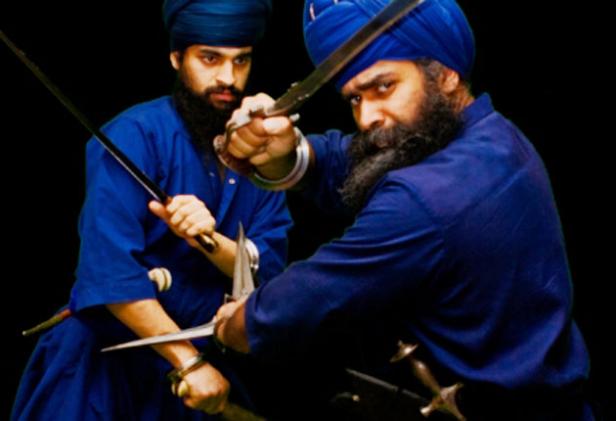 A fascinating article in a UK newspaper highlights the return of Shaster Vidiya – the “world’s original martial art” which was banned by the Raj after the final defeat of the Sikh empire in the mid-19th century. Considered a forgotten art form, Shastar Vidiya was practiced in North India before the emergence of Sikhism. However, it was the Sikhs who were known to have fully mastered this particular fighting style.
A fascinating article in a UK newspaper highlights the return of Shaster Vidiya – the “world’s original martial art” which was banned by the Raj after the final defeat of the Sikh empire in the mid-19th century. Considered a forgotten art form, Shastar Vidiya was practiced in North India before the emergence of Sikhism. However, it was the Sikhs who were known to have fully mastered this particular fighting style.
Now, it seems, young British Sikhs are attempting to revive this lost art form. Their teacher, a controversial figure named Nidar Singh Nihang, has been studying the art of Shastar Vidiya for the past 20 years in hopes of passing it onto the younger generation. Students begin learning how to fight with simple wooden sticks. However, those who show a particular skill and dedication are allowed to practice with the kind of swords that once made the Sikh armies so powerful. The article points out the irony of a British Sikh trying to resurrect shastar vidiya given the history,
Cynthia Mahmood, author of the groundbreaking work, “Fighting for Faith and Nation,” just published an incredibly personal and powerful account of her rape and assault, possibly by Indian police, in an attempt to silence her  anthropological work on Sikhs in Punjab in the early 1990s. Luckily for all of us, the rape did not accomplish its goal and instead seems to have fueled Ms. Mahmood’s fire. She courageously continued her work and has again shown courage in speaking publicly about such a deeply personal, and deeply difficult incident. Ms. Mahmood’s work has been incredibly important to revealing the human side of the violent Sikh movement for independence and the brutal suffering of Sikh civilians in Punjab during the 1980s and 1990s. Without her contribution, the movement for justice for 1984 and the following decade would not be where it is today. Through her rigorous scholarship and powerful writing, she exposed a side of the story of Punjab that otherwise perhaps would have been left uncovered. In addition to “Fighting for Faith and Nation,” she co-authored the also ground-breaking work, “Reduced to Ashes: The Insurgency and Human Rights in Punjab.” I can’t emphasize enough how important her scholarship has been to the Sikh community. She’s a frequent speaker, commentator, and expert on Sikh separatism and human rights in Punjab.
anthropological work on Sikhs in Punjab in the early 1990s. Luckily for all of us, the rape did not accomplish its goal and instead seems to have fueled Ms. Mahmood’s fire. She courageously continued her work and has again shown courage in speaking publicly about such a deeply personal, and deeply difficult incident. Ms. Mahmood’s work has been incredibly important to revealing the human side of the violent Sikh movement for independence and the brutal suffering of Sikh civilians in Punjab during the 1980s and 1990s. Without her contribution, the movement for justice for 1984 and the following decade would not be where it is today. Through her rigorous scholarship and powerful writing, she exposed a side of the story of Punjab that otherwise perhaps would have been left uncovered. In addition to “Fighting for Faith and Nation,” she co-authored the also ground-breaking work, “Reduced to Ashes: The Insurgency and Human Rights in Punjab.” I can’t emphasize enough how important her scholarship has been to the Sikh community. She’s a frequent speaker, commentator, and expert on Sikh separatism and human rights in Punjab.
I’m astounded and inspired. You must read the entire account, though I’ve copied a few passages below. Ms. Mahmood reveals herself to be resilient, committed to truth, and irrepressible in spirit.
During 1984, Ms. Mahmood was in India studying ancient Buddhism for her dissertation, “Rebellion and Response in Ancient India: Political Dynamics of the Hindu-Buddhist Tradition” when the struggle between Sikhs and the central government was constantly in the news. She travelled to Bihar in 1992 to study a tribal group, and in a north central Indian state, was discouraged- severely- by (possible) Hindu nationalists from studying the Sikhs of Punjab. The discouragement came in the form of a severe assault and a brutal gang-rape.
Her account of the rape is visceral and will leave you haunted.
Slash, slash, blood. I see the blood dripping, even in the dark. I smell my own blood over the smell of the rotten tangerines.
I cannot fight back, not against this. I should survive, only survive.
Oh! I hadn’t noticed. Black-shoe man is raping me. [link]
Many of you will fondly remember Rohanpreet’s performance on Zee TV last year. In similar news, here is Rashpal Kaur – a young girl from Chandigarh – who recently performed Gatka on Zee TVs Dance India Dance. The judges were not only taken aback by her performance, but also by the adversity she had experienced. Rashpal discovered that she had a life threatening brain tumor when she was pregnant. The treatment she received took away her vision but she was able to deliver a healthy baby boy.
“I only wished that I could see my son once. I just ask God to lend me my eye sight back for just for three hours so that I can see my child just once,” Rashpal said. But this is one wish that has never got fulfilled for Rashpal. [link]
As an ancient martial art, Gatka is considered a spiritual as well as physical exercise. I was impressed with what Gatka meant to Rashpal,
I’m thankful to Dance India Dance for helping me to reach out to so many people. The citizens have shown so much concern and care for me. Before I die I want to do something for my guru Kuljeet-ji and his martial arts school where he teaches young girls about self defense. In today’s times when women are being molested and victimized every other day, I want all the women to learn this martial art form to defend themselves and their dignity.” [link]
It’s an inspiring example of how one can turn pain into something much more powerful. You can view Rashpal’s performance after the jump.
Today, I want to share with you, Nirpreet Kaur’s story. I highlight her story for 2 reasons. 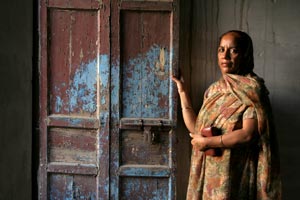
First, as we’ve discussed on this blog before, the majority of Sikh history as its been documented thus far really is his-tory. So this piece of her-story is a rare gem. And second, too often, we think of women in the Sikh community only in our roles as mothers, sisters, wives, and daughters. These are all important roles but our identity isn’t entirely defined relative to others’ or based on our relationships with others. Yet we recognize the additional roles we play outside of these expected roles too rarely. And so… Nirpreet Kaur.
Nirpreet was 16 years old on November 2, 1984 when the mob came for her father, Nirmal Singh…”[Khokhar- a Youth Congress leader] sweet-talked my father into coming with him for a compromise,” says Nirpreet. But Khokhar went straight to the mob and handed Nirmal Singh over. The oldest of three siblings, Nirpreet, ran to the mob but could only watch helplessly as her father was tied up and set ablaze. [link]
To avenge the killing of her father, Nirpreet joined the Khalistani movement.
As a functionary of the then dreaded All India Sikh Students Federation, Nirpreet came in contact with those involved with the Khalistan movement, an armed insurgency fighting for an independent Sikh homeland in Punjab, and became part of the militancy that ravaged the state for over a decade in the 1980s.[link]
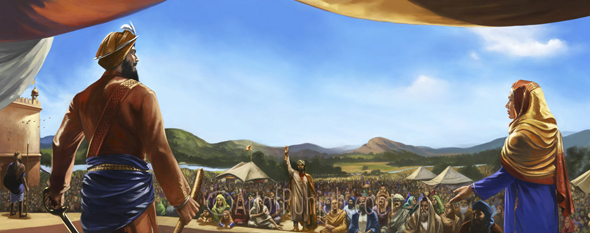
With Vaisakhi upon is, what is it you think of? Perhaps Anandpur Sahib, the city of bliss? Maybe the Panj Piaray, the five beloved ones? Or perhaps it is Guru Gobind Singh Ji’s message of fraternity and equality that resonates with you. Whatever it is that you think of, I wonder if it stirs you or moves you to see the world in a different light – in the light that our Guru hoped for us. On this day, in 1699, our Guru gave us the potential to be born again. Without caste, without discrimination, and without fear.
It is clear that issues of caste and discrimination still play a role in our communities today. However, I came across a promising article in the Guardian which discusses how a small café in India is challenging long-held caste taboos by hiring Dalit women to work within the café as waitresses. Although the Indian constitution banned untouchability sixty years ago, Dalits are still often forbidden, in villages and small towns, from doing anything other than low menial jobs. We all know it is not easy to challenge century-old beliefs, however this café is doing just that. As Sikhs, these issues should matter to us and we should stand up against injustice within any community.
An interesting paper, which I found on the Punjab Research Group site, titled “Dalits and the Emancipatory Sikh Religion” discusses the role Sikhi played in liberating Dalits.
It is beyond doubt that Sikhism emerged as an emancipator for the lowest of the low. Nanak, the first Guru, was clear when he says:
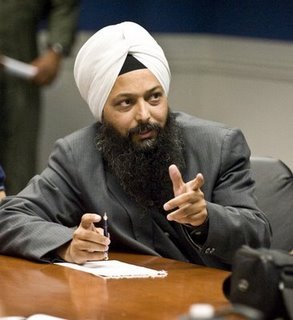 Last week, we saw the birth of a new Sikh folk hero. I am sure the dhadhi jathas (just as Chuck D called rap music the CNN of black people, dhadhi jatha is the CNN of the Sikhs) are already warming up their sarangi and dhad.
Last week, we saw the birth of a new Sikh folk hero. I am sure the dhadhi jathas (just as Chuck D called rap music the CNN of black people, dhadhi jatha is the CNN of the Sikhs) are already warming up their sarangi and dhad.
While other commenters have suggested material reasons for the turnabout in the Congress Party’s decision, I still contend that we must celebrate the Sikh masses for galvanizing the issue. The show of force came through Sikhs and their ‘rail roko’ with the shutting down of the railroad system throughout Punjab.
Although I am well aware of the political advantages that the Akali Dal and BJP sought to gain from the issue of the Delhi Pogroms of 1984, I hope for naysayers, worst of all those within our community, that like to state “the past is the past” and “let bygones be bygones” they realize the past does affect the present and life still does reside within the Sikh masses and polity.
Our so-called “leaders” rarely lead. Throughout Sikh history, it has been the masses that have had to goad these so-called leaders. Whether it was the movement to free the Gurdwaras from British-Mahant control during the early part of the 20th century or even the Sarbat Khalsa and subsequent declarations at the Akal Takht in 1986, the Sikh masses have always been the main impetus of the Qaum. The Guru Granth Sahib is our guide and the Guru Khalsa Panth (and not individual leaders, be they SAD Presidents or Jathedars) is our temporal collective body.
As we remember 1984 through concerts and acts of rebellion, let’s not forget the visceral spirit displayed by Singhs IN that time period.
Watch below the original version of a Punjabi kavita sung by Bhai Gursharan Singh during those turbulent times in Manji Sahib Hall located in the Darbar Sahib complex . This kavita captures the mood and spirit of those days. Tigerstyle later used it in one of their Shaheedi CDs to REMEMBER that spirit.
Intellectually, we can try to REMEMBER those days; but this kavita actually makes us FEEL how it was to live through that time.

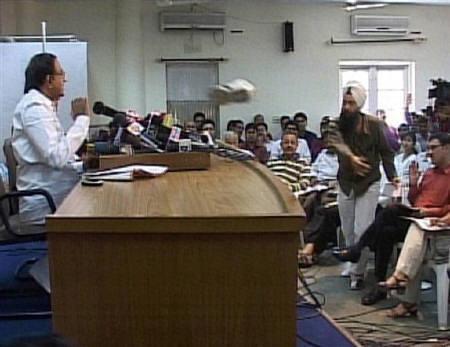 I know many will object to this post and ask how does a shoe bring justice to the thousands that lost their lives in 1984? My reply – it doesn’t.
I know many will object to this post and ask how does a shoe bring justice to the thousands that lost their lives in 1984? My reply – it doesn’t.
But what it does do is highlight the farce that calls itself Indian justice.
Earlier this week, I wrote about Sikh outrage against the Congress Party’s continuance of giving electoral posts to genocidal murders. While I still hold my claim of an independent position against Parkash Badal, the Akali Dal, and the BJP’s opportunism and the Congress Party’s celebration of impunity, the action of journalist Jarnail Singh warrants commentary and analysis.
 Although it has been a few months since its ‘soft opening’, the National Sikh Heritage Centre and Holocaust Museum at Derby in the UK in July will soon host the Queen of England, Elizabeth II, to inaugurate the museum.
Although it has been a few months since its ‘soft opening’, the National Sikh Heritage Centre and Holocaust Museum at Derby in the UK in July will soon host the Queen of England, Elizabeth II, to inaugurate the museum.
Although many Gurdwaras have a ‘museum’-room and apparently on the internet we have a cybersikhmuseum, the initiative to bring scattered items of Sikh heritage is much needed and should be lauded.
The Museum hosts a number of artifacts, including a canon that belonged to the Sarkar-e Khalsa during the time of Sardar (often erroneously called Maharaja by Sikhs) Ranjit Singh.
The library is currently featuring an exhibit ‘From Jawans to Generals’ and in May will begin an exhibit on the Sikh Holocaust of 1984. They are beginning to collect rare books and hoping that the library will become a hub for Sikh scholarship.
The museum by bringing many such historical artifacts, located throughout UK together is more proof of the burgeoning of the Diaspora Sikh community and its finding new ways to engage with its changing self as well as non-Sikh community members. One hopes we will see similar initiatives in the US and Canada as well.
I don’t know if it’s actually appropriate to say “Happy Hola Mohalla” or “Happy Sikh New Year” (doubt it) but these are the awkward felicitations we’re going to have since we blog in English…
According to the Nanakshahi calendar (a solar calendar which begins on what’s understood to be the day of Guru Nanak’s birth in 1469), the new year is approaching. New Year’s Day falls on March 13th of the Gregorian (Western) calendar. And Hola Mohalla, which is celebrated according to the Indian (lunar I think) calendar was celebrated today (March 11) in Anandpur Sahib. Too many calendars.
I had the immense pleasure of going to a Hola Mohalla a few years ago and have to admit that it was thrilling. The roads leading to Anandpur Sahib were teeming with Sikhs from all over Punjab, and some from further parts of the country. Buses came fully loaded, as did tractors and trucks with their backs open and passengers sitting inside, outside, and on top. Many people walked, some barefoot, from incredible distances. The roads were lined with sevadars serving langar to all the weary travellers- cha, samosay, cholay, pakoray! My mouth is watering at the memory… It was an amazing celebration and feeling of community. Gatka was fought, poetry was recited, and Holi revelers threw colors at anyone within range (such is the blend of celebrations in India… maybe everywhere for that matter).
Nihangs gathered to show off their weapons, athletic prowess and fighting techniques. Men of all ages- young and old- rode two horses at a time at full speed, standing up, (a few who had had too much bhang fell) down a long grassy field with the foothills that once gave their ancestors refuge from battle in the backdrop. It was easy to imagine that it was 300 years ago and these Nihangs (except the ones who fell from too much bhang) were preparing for a real battle.
[some more pictures below the fold]
As the 25th anniversary of “1984” approaches us, TLH posts have covered some activities commemorating this devastating time in our history.
My most vivid memories of “1984” are watching Indira Gandhi’s funeral on television and the border of photos inside my local Gurdwara’s Langar Hall of the men who had been tortuously killed during the Khalistani movement. As I got older, I always wondered how Sikh women were impacted by these events, aside from the infamous photo of a widow crying with her child in her arms.
I read about a woman who was strongly involved in the Sikh student movement in Punjab but now lived on the East Coast (USA). At the Fremont Gurdwara, I remember the single picture of a woman who helped make the border of Shaheeds’ photos hung high in the Langar Hall. I recall the emotional testimonies of widows left deserted by our community and the Indian government in the film, “Widow Colony”. Most recently, I came across this poem, “Don’t Feel Sorry For Me, I Am The Daughter Of A Shaheed” written by woman who lost her family in the 1984 riots in Delhi.
Yesterday, the newly inaugurated president said, “… the world has changed and we must change with it.”
But just what has changed? In the euphoria of yesterday’s ceremonies, some seemed to expect that from now on, the sun would always shine and no one would ever go hungry again. The inaugural ceremony itself provided ample examples of both what had and hadn’t changed.
What ha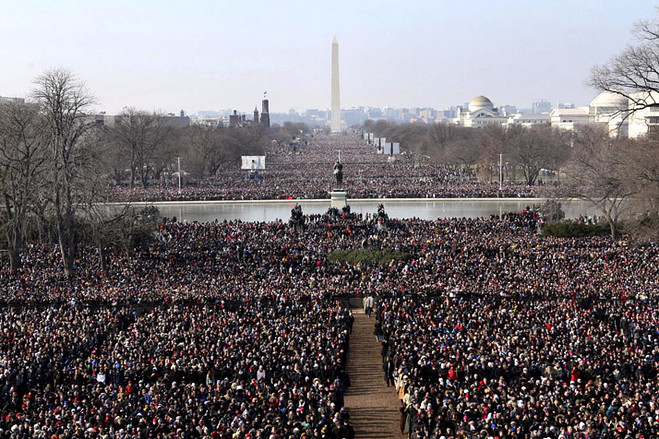 d changed, at least for a few days in DC was that people were exuberant. Strangers became friends. Hugs, high-fives, and tears were shared with neighbors crowding the national mall, cafes, and homes throughout the city. People were generous. An older woman from California gave her flannel shirt to a younger woman who had been waiting beside her in the bitter cold since 6:30 in the morning.
d changed, at least for a few days in DC was that people were exuberant. Strangers became friends. Hugs, high-fives, and tears were shared with neighbors crowding the national mall, cafes, and homes throughout the city. People were generous. An older woman from California gave her flannel shirt to a younger woman who had been waiting beside her in the bitter cold since 6:30 in the morning.
But in some areas where organization was lacking, the chaos vividly showed that when people’s expectations were unfulfilled, survival of the fittest remained the governing natural law. A Congressman reportedly tried to drive through people waiting in line and got stuck in the crowd when they surrounded his vehicle. At least 4 ambulances were seen transporting people injured by the crushing crowd. These scenes resembled a Delhi train station more than the Washington DC I’m used to.
So, what’s changed?
In Richmond Hill, early Sunday morning, another Sikh youth became a victim of a hate crime. Jasmir Singh’s hair and beard were pulled, and he was stabbed in the eye. He may lose his eyesight. [link]
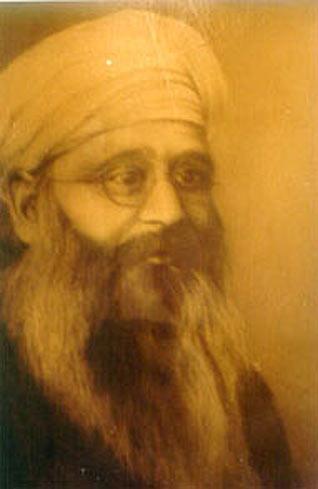 The digitization of books has created a whole new way for Sikhs to access their history. I’ve stumbled onto a lot of historical Sikh literature that I had never heard of. For example, through Google’s Book Search function, I discovered a tourist guide to Punjab from the 1880’s (here’s an excerpt on visiting Amritsar).
The digitization of books has created a whole new way for Sikhs to access their history. I’ve stumbled onto a lot of historical Sikh literature that I had never heard of. For example, through Google’s Book Search function, I discovered a tourist guide to Punjab from the 1880’s (here’s an excerpt on visiting Amritsar).
Over the holidays, I found a scanned version of a first edition of The Life and Teachings of Sri Guru Tegh Bahadur. It was written by Puran Singh and published by The Khalsa Agency in Amritsar in 1908. Puran Singh has a way with words like no other Sikh author I’ve ever encountered. His books The Spirit Born People and The Ten Masters are essential readings for anyone interested in Sikhi. In his book on Guru Tegh Bahadur he writes:
He looks upon the world with that far-seeing vacant eye with which a mariner, having lost his boat, looks upon the broad sea, seated on a rock in the middle dashed by the waves of the angry sea. The world to him is lost in the constant vision of the higher Reality of its soul. There is an intense spirit beating within his heart, which weeps ard cries at the sight of a man who is lost in the tempest of passions and remembers not the glorious life of his beyond this little life and the glorious inheritence of his in ideals of God, Love, and Truth.
He is a high abstraction in the love of God, and whenever a single thought of the world lowers his consciousness from those ethereal heights, he at once sings of God-consciousness and soars again.”Remember thy God, remember thy Lord, this is thy one duty, thy only duty,” says he.
However, what I really want to share is his opening introduction. The words are 100 years old, but just as or probably more relevant today.

